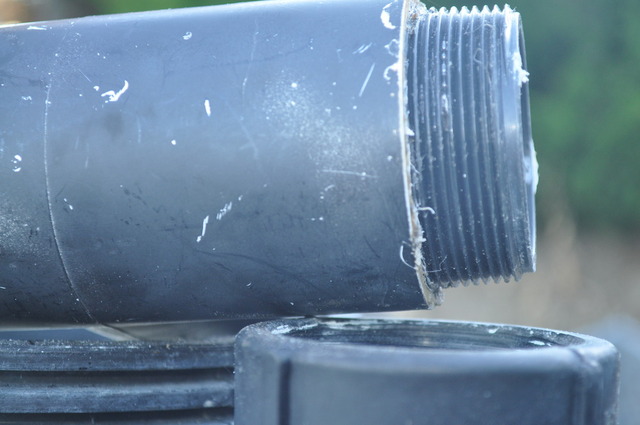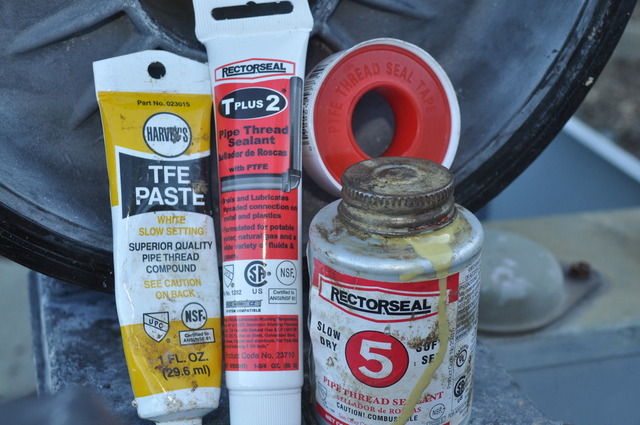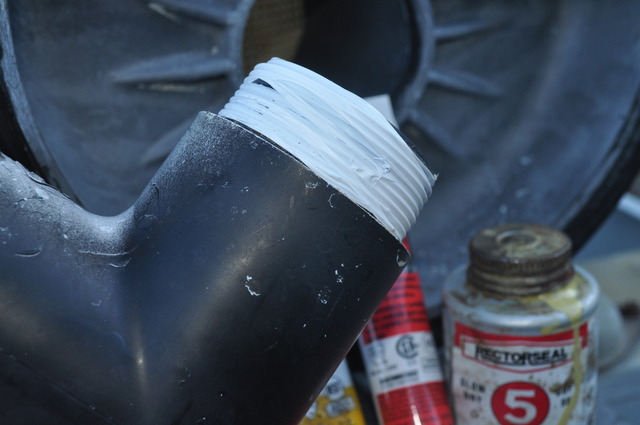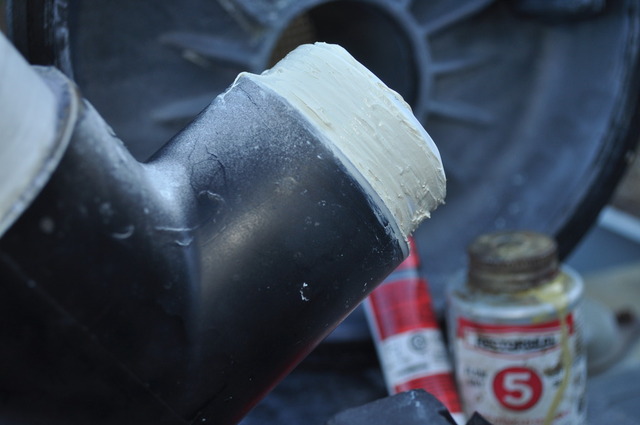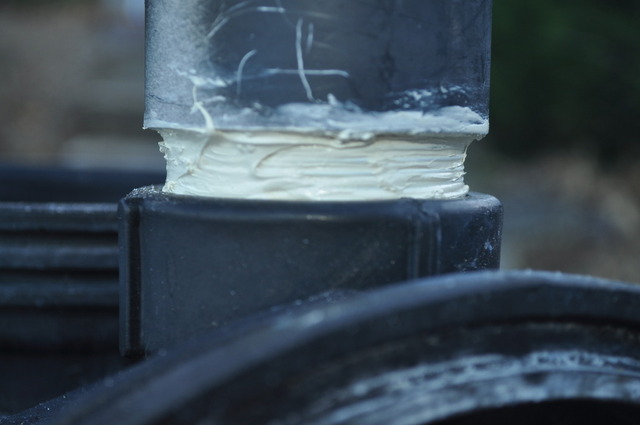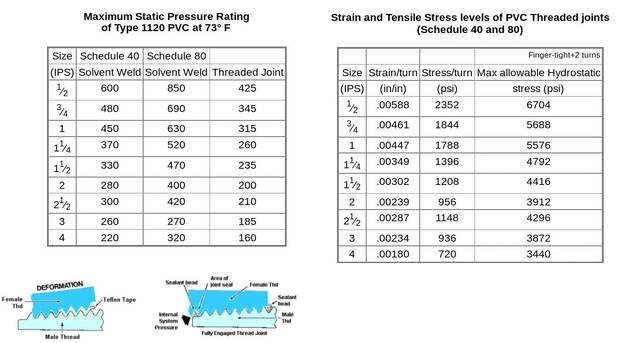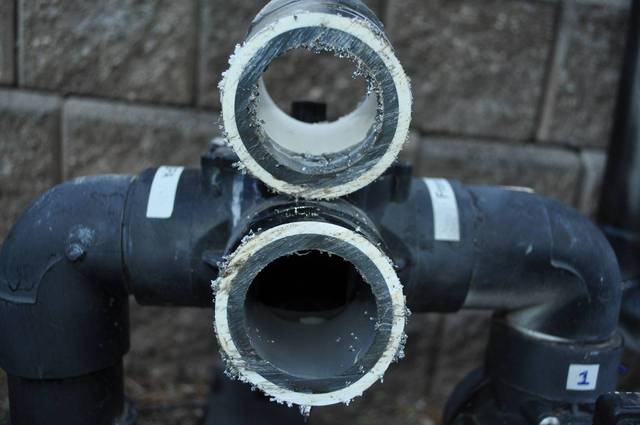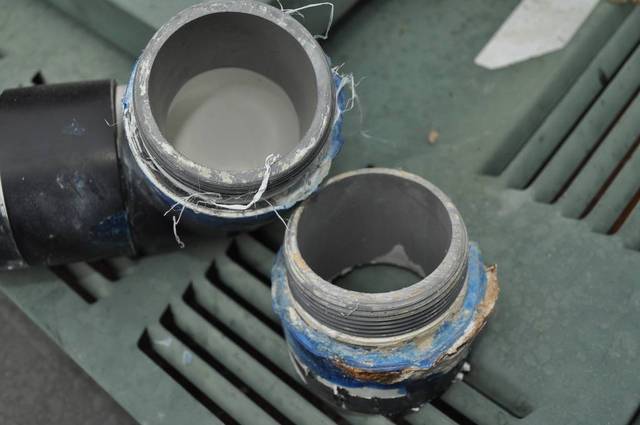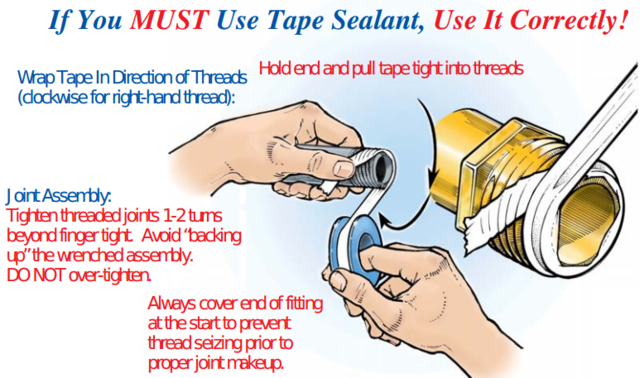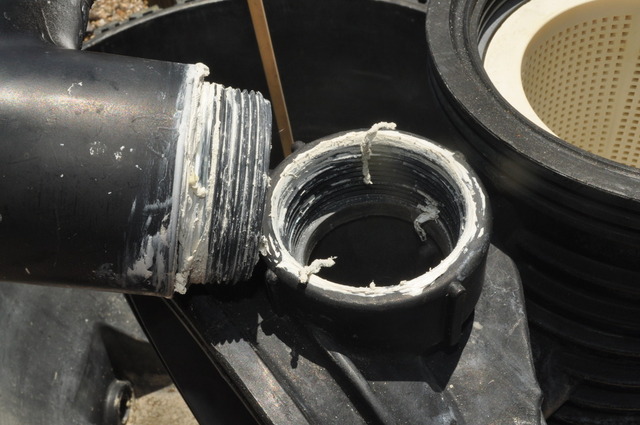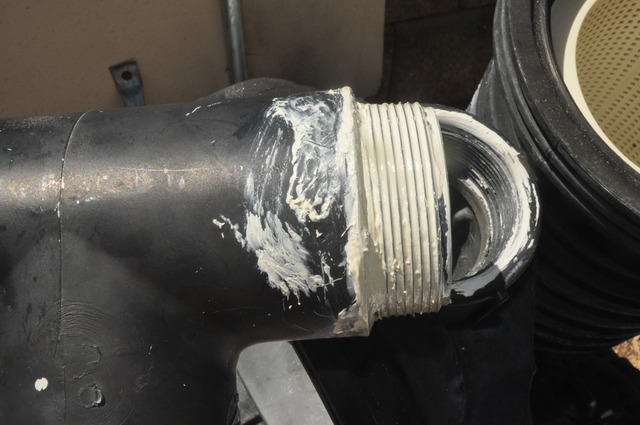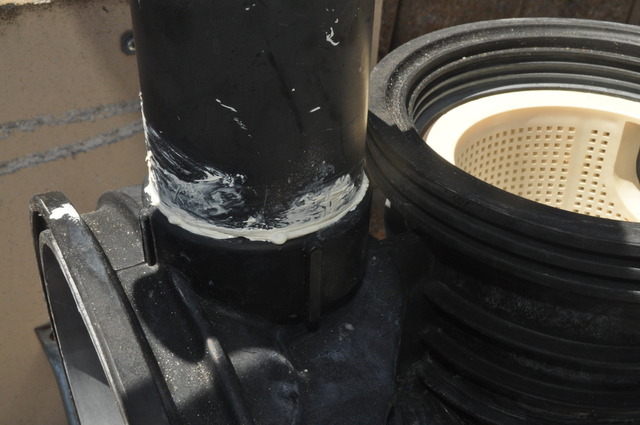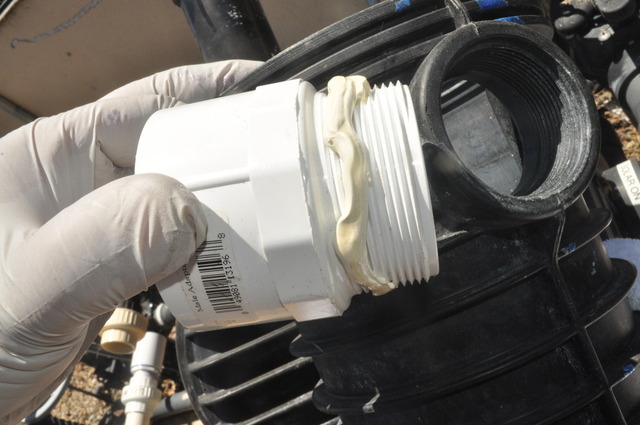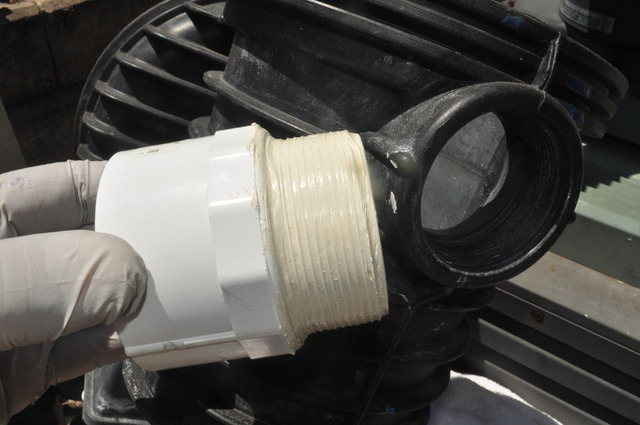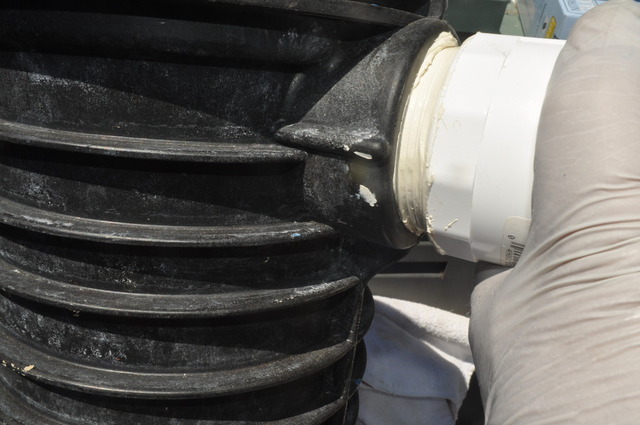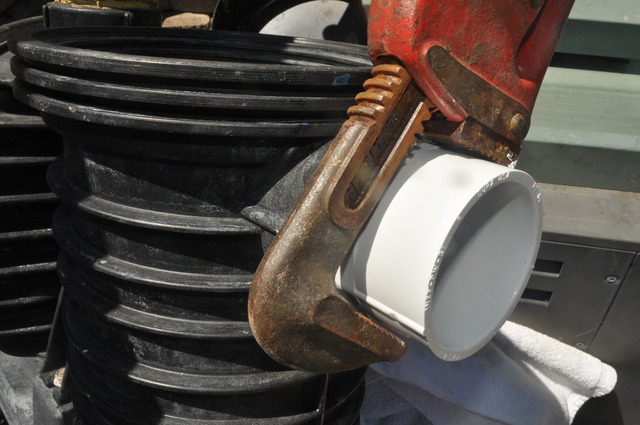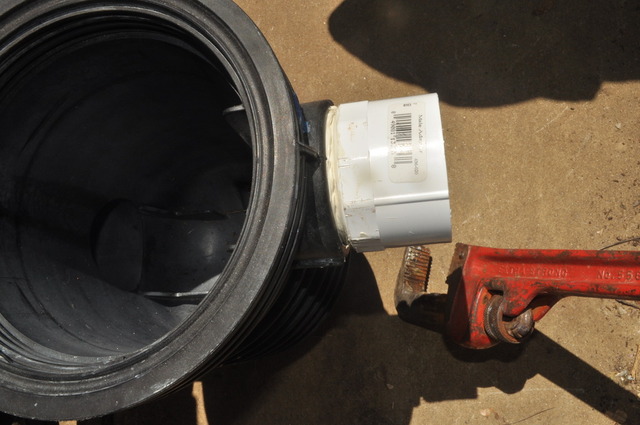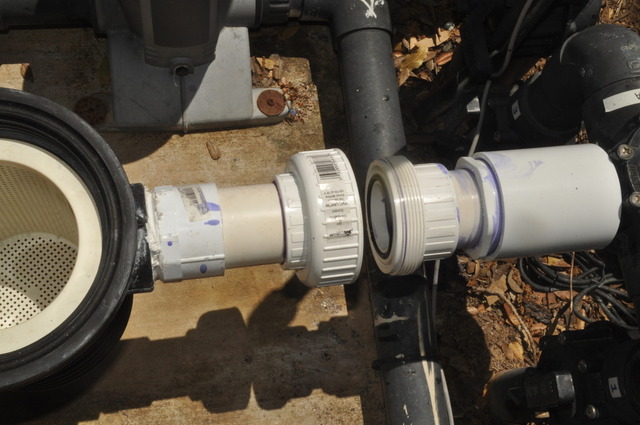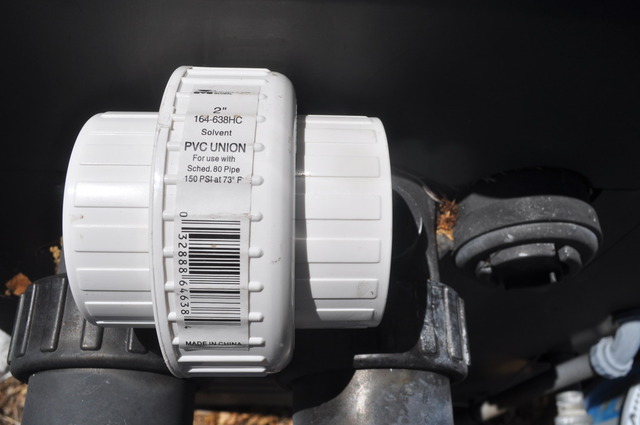Re: Does the order of the tape & pipe sealant matter on 2" p
duraleigh said:
I simply used pipe dope throughout my entire system and tightened them all to what I felt was secure
Me too!
But, I like to know the right way to do things - even if I don't do them right the first time.
I thought that article very interesting, especially since I (apparently) have glued gray schedule 80 fittings at the Jandy valve junctions:
And, I have schedule 80 threaded fittings (apparently) at the pump junctions:
What that article intimates is that whoever used those Schedule 80 fittings was treating the symptom, not the disease. Apparently, the disease of plastic female threaded fittings splitting when tightened can be cured by using a proper thread sealant instead of using lubricating pipe dope or Teflon tape on plastic threads. Specifically, that article implies that the use of either Teflon tape or pipe dope on schedule 40 plastic threaded fittings will increase the wedging action of the male pipe threads, thereby increasing the liklihood that the female fitting might split.
It seems they're postulating that if people used a non-lubricating thread sealant instead of pipe dope or Teflon tape, there wouldn't be the increased splitting force on the female fitting, and there wouldn't
be any splitting problem. So, switching to Schedule 80 female plastic fittings to avoid splitting is not really solving the problem. The real solution, they say, is found in using non-lubricating thread sealant instead of pipe dope and/or Teflon tape to avoid the splitting problem altogether, rather than adding the stronger schedule 80 fittings that will stand up to the greater splitting force.
In summary, they implied the use of Teflon tape or lubricating pipe dope can lead to splitting of the female threaded fitting so that's why they banned tape and suggested non-lubricating pipe sealant.
And, they implied that the thicker schedule 80 PVC threaded fittings will be just as stressed (to the first order approximation) as the thinner schedule 40 fittings because both are wedged open to the same extent when tightened the same number of turns .
The article emphasized that a thicker fitting is not the answer - proper non-lubricating sealant (not Teflon tape or lubricating sealant) and tightening only two turns after finger tight was the answer, they said.
Below is another article that deprecates Teflon tape for PVC male fittings, even as it explains how to properly put on the tape if it must be used in emergencies:
http://www.spearsmfg.com/how_to/FG-3B-0 ... nglish.pdf
